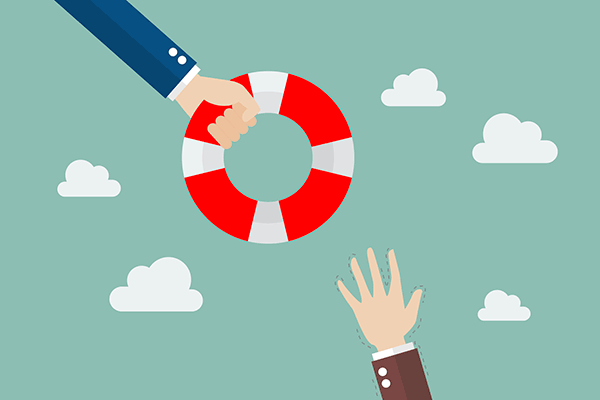I was invited by #BrandMinds to write an article about Crisis Management and brands reaction. The article touches some blunt points:
- The self awareness and the leadership profile of the top management in the organisation becomes obvious;
- Each crisis has its own new patterns;
- There are different natural reactions facing crisis: from “duck and cover”, to taking the opportunity for a fast change;
- The usual Command and Control Chain will block;
- Challenger brands have can highlight their Brand Big Idea. “Active Substance” or “Sugar Coating”?
The Self Awareness and Leadership Profile of the Organisation
The best companies and brands manage a crisis by showing an increased sense of self and others awareness. They can spot and bridge the gaps that did not exist before. The best leaders act on fast-forward, replacing the need for perfection with pace and an acute sense of urgency.
The classical manual of crisis management has three steps: the leader must take control and demonstrate that is fully in charge; has to show that understands the issue; has to act forceful, overcompensating. Trust, knowledge and control are the main ingredients.
But let’s look deeper.
Each Crisis has its Patterns
A crisis disrupts the fabric of existing behaviours. It starts by altering the patterns of life and affects the client’s psychological needs. Everyone backslides towards safety necessities. The blow of a crisis challenges the old norms, and as a result, it levels the playfield between different kinds of companies.
Every crisis has its own degree of novelty and innovation. The 2000 crunch was focused mostly around the internet fizz. The 2008 depression was triggered by the housing bubble and infected the financial markets. Now, we have a new class of situation, a step-up in the crisis category: a health calamity and a lock-down impairment. There is no manual available in the corporate world on how to respond to it.
How can companies tackle this new enemy?
Different Natural Reactions, from Duck and Cover to Leading Change
After out passing the first “freeze” moment, some companies will do what they performed before in other dire situations, only more aggressive. Facing cashflow issues, they will contract. Most companies will tighten around core business, cut costs, increase the revenues for the few products that respond to basic needs, lay off redundant people. They will rapidly exit fragmented or unprofitable markets.
It is decent crisis management reaction. With a degree of luck, and if they have their coffers full after the boom years, they will survive the hibernation period. Afterwards, they will return to their old businesses, only slender and more vigilant.
Every crisis creates also a fine class of winners. These are the few companies that will act differently from the early beginning. They are sharp, flexible and will step forward. They will seek to make the difference. Instead of cutting, they will adapt and invest. The leaders will replace the question “how can we deliver our sells targets?”, with “how can we change, contribute and help?”.
These companies are not the largest ones, nor do they have a better crisis manual. They learn genuinely as they do, accepting mistakes and following their instincts. The instinct of a business is embedded in its culture. Their ambition, key values and beliefs, the way they trust each other will surface in these difficult times. Now is the best opportunity for a company and its management to highlight what is the material they are made of. Or, to recognize that all the nice words from corporate presentations are just corporate fluff, wallpapers they put conveniently behind the reception desks.
The Blockage in the Command and Control Chain
The companies that will block and suffer mostly, are the “command and control” ones. They natively do not trust their own people judgement. They concentrate the power of decision to few all-knowledgeable executives. Their line managers do not work for the external clients or for the communities, but to please the commanders-in-chief from their organization. The “pleasers” were promoted not because they are nimble or strategical, but because the way they obey orders, and efficiently implement the ideas of those who are truly in charge.
The news is that the environment changed, and one or few persons cannot hold all the answers.
The winners of the crisis will learn new skills very fast. These companies will make the difference just because they have entrepreneurial people leading the frontline squads. These organisations are made up of independent cells that do not wait for orders, there is no time for that during a war. They have the natural reflex to recognise what is right or wrong, and what has to be done. These companies will intuitively transform during these months. Will emerge as the new entities that will dominate a transformed food chain, the frontrunners after the crisis will eventually end.
This crisis will help terminate part of the autocratic “command and control” practices. Hard power will be replaced by soft power, orders by influence, pleasers by self-governing people. The stars will be those organizations that have a clear ideology, they act fast, adaptive, organized in squads, led by autonomous and virtual leaders. Each internal group can react quickly and independent.
Challenger Brands Can Highlight their “Brand Big Idea”. “Active Substance” or “Sugar Coating”?
A crisis it is a perfect opportunity for brands and companies to highlight their active substance and the material they are made of.
On shorter term, the rational benefits will attract the consumer trust. On longer run, the public will feel safer with the brands and companies that can prove they are leading the way out of this crisis. These could be the enterprises that show they care, have empathy, and intend to contribute in the community.
It is a chance for the smaller brands, because they are more agile. They can show their true strengths. If they really have an “active substance”, and is not just “sugar coating”, now is the window of opportunity. It’s a time when actions are more powerful then words, and outlives any media plans.
“Brand Big Ideas” can be shown in the full splendour, in the entire mix: product, package, placement, partnership. Communication is just the tip of the iceberg.
A good crisis management levels the playfield. Now can be a great time to prove yourself. “How can we change, contribute and help?” will be the companies and brands acid test.
The full material in Brand Minds can be found here: https://brandminds.ro/mihai-bonca-on-crisis-management-marketing-is-your-brand-willing-to-adapt-in-order-to-contribute/


